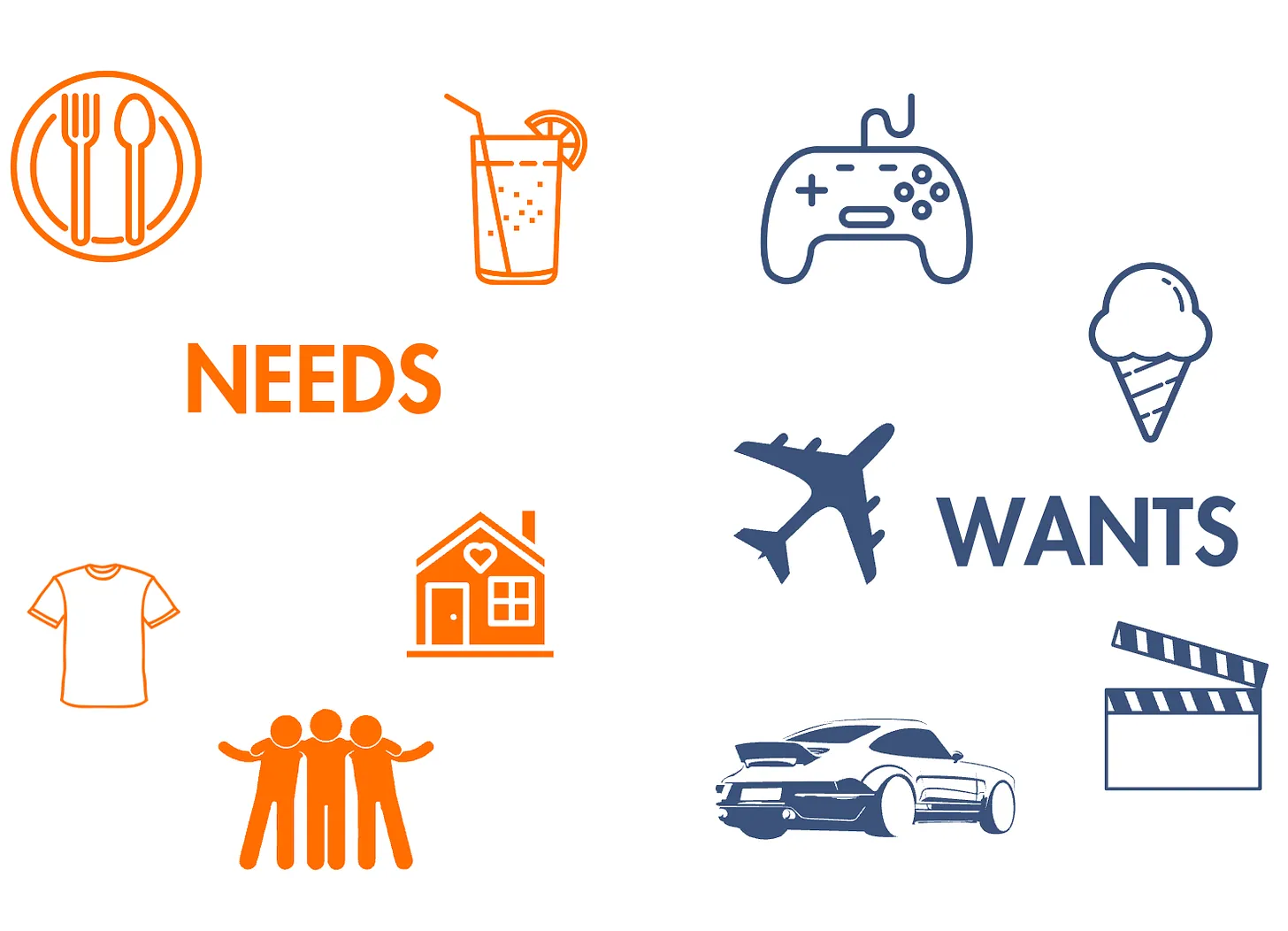
Needs Vs. Wants
Needs Vs. Wants https://www.visualstorytell.com/wp-content/uploads/2024/02/needs-vs.-wants-thumb.png 366 222 Shlomi Ron Shlomi Ron https://secure.gravatar.com/avatar/995c0cf093380b90c7704fda398c9addf4e5c605afbc92af5c3f01f67d65aa41?s=96&d=mm&r=g- Shlomi Ron
- no comments
When I mentor startup founders I often start by asking them what is the core problem they’re trying to solve.
Yep! There is a pitch deck slide for it.
Sometimes I get a very clear answer that tightly ties a clear burning pain point to a distinct customer persona.
Yet, often founders tend to describe more than one problem that is good for many customer segments.
The stakes are high.
CBInsights reports that 70% of VC-backed startups are failing. Correct! I refer to those ventures that managed to persuade investors.
And guess what, the #1 reason for failing is – “no market need.”
Translation: founders went to market with a nice-to-have problem that was not properly validated.
This issue also comes up when I work with brands that need to tell compelling stories as part of their ongoing marketing.
As you may know to tell a good story you need to know what is the true conflict your customer experiences in real life.
Otherwise, you lose the reliability aspect.
Furthermore, with the rise of deep-fake technologies and disinformation, people are looking today more than ever for more truthful narratives.
Diving deeper to better define the customer problem, another confusion is around the difference between customer’s wants vs. needs.
Long ago The Rolling Stones aptly put it:
You can’t always get what you want
But if you try sometime,
You might find you get what you need.
As you can see, wants are not essential and typically linked to our desires and emotions.
When you’re talking about needs, think of Maslow’s Hierarchy of Needs ranging from physiological, safety, and social – to self-fulfillment needs.
Needs tend to be more urgent and recurring like food and shelter, whereas wants are more occasional indulgences like tickets to a show or dinner and a movie.
There’s nothing wrong if your product/service solves a want vs. a need but your visual storytelling should reflect it.
The storytelling angle
External look
When you plan your story – whether you’re dealing with a customer’s need or want – consider dramatizing relatable narratives you’ve learned from your customer interviews, surveys, digital analytics, and overall industry research.
This way you’ll be able to carve out a complete Empathy Map uncovering what your customers think, feel, say, and do.
For any story to be effective, it must mirror your customer’s true realities.
No shortcuts here!
The good news is you have a ton of story types and plot genres to choose from to fit any stage of your buyer’s journey.
At the end of the day, your customer looks for different information at each stage – think a stranger vs. advocate – therefore your stories should reflect that.
Internal look
Wants vs. needs should also guide your career journey.
I can tell you that early on in my career I thought I wanted to be a lawyer. Why? It’s likely because of the typical status and stability reasons you can think of.
After one year in college, I realized immersing myself in the art of untangling arguments all day long – is not my thing.
I changed direction and worked in various print media organizations and from there found my way into marketing working in various digital marketing roles at IBM, Nokia, and American Express.
All along, I was blogging about classic Italian cinema and managing my father-in-law’s estate of video art – Buky Schwartz to preserve its legacy.
Throughout my journey, I kept wondering: How can businesses rise above the growing information overload – these days exponentially amplified by AI-generators and disinformation – riding on such fleeting attention spans?
My guiding north star was the belief that people respond better when they can see their true problems mirrored in a meaningful visual story.
Looking deeper
Save The Cat is a well-known storytelling formula developed by Blake Snyder, that novelists and screenwriters use for writing novels and films.
I liked the way she describes the hero’s initial want which is part of the external story that happens on the surface.
Think car chases, wars, or corrupted government – it’s the exciting driving engine of the story and what you see promoted in movie ads.
The moral of the story is when the protagonist realizes what she wants is not what she truly needs.
This transformation is part of the internal B Story that lives below the surface (aka the premise).
BTW don’t let the B Story label fool you.
It may sound like a B Movie but it’s the real deal – your true calling.
For example, Brody indicates, that the movie, Ready Player One is not about a worldwide Easter egg hunt through a massive online simulation game – the external A Story.
The internal story is about a shy video gamer who learns how to develop human connections offline – the B Story.
Reading this, made me think harder about what I’m doing – as the hero of my story – am I after something I just want vs. what I truly need?
It’s a good exercise I recommend you occasionally ask yourself. We sometimes tend to ignore our internal B Story while chasing pipe external A stories 🙂
And yes, you can equally pose the same question to your customer when planning your story.
- Post Tags:
- needs vs. wants
- storytelling
- Posted In:
- Story Telling
- Visual Storytelling
Shlomi Ron
Shlomi Ron is the founder and CEO of the Visual Storytelling Institute, a Miami-based think tank with a mission to bring the gospel of visual storytelling from the world of art to more human-centric and purpose-driven marketing. A digital marketing veteran with over 20 years of experience working both on the agency and brand sides for Fortune 100/500 brands such as Nokia, IBM, and American Express. He started VSI to combine his marketing expertise with his passion for visual stories stemming from his interests in classic Italian cinema and managing the estate of video art pioneer, Buky Schwartz. At VSI, he helps brands rise above the communication noise through visual storytelling consulting, training, and thought leadership. Select clients include Estée Lauder, Microsoft, and Cable & Wireless – to name a few. He currently teaches Brand Storytelling at the University of Miami’s Business School. Thought leader and speaker at key marketing conferences. He is also the host of the Visual Storytelling Today podcast, which ranks in the top 10 best business storytelling podcasts on the Web. His book: Total Acuity: Tales with Marketing Morals to Help You Create Richer Visual Brand Stories. Outside work, he is a nascent bread baker, The Moth fan, and longtime fedora wearer likely to jive with his classic Italian cinema interest.
All stories by: Shlomi Ron




